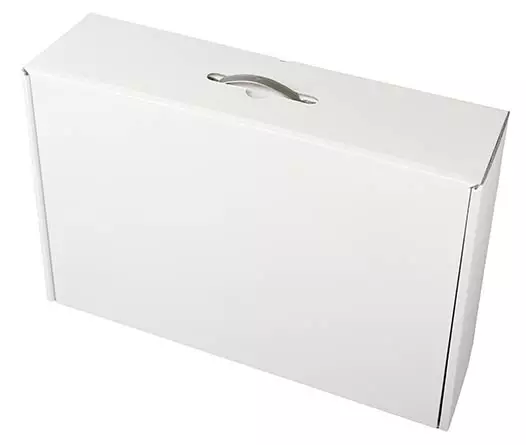Do I need an MRP system?

There comes a time with your current manufacturing system processes where you have to sit back and say, ‘is this really the best that we can do?’.
This thought process is often reached after a particularly painful experience, derived from the point of three possible scenarios. Perhaps you’re using a collection of Excel spreadsheets and/or paper-based systems, you have created and subsequently outgrown a bespoke system, or have already invested in a ‘packaged’ system which is no longer fit for purpose.
There are initial benefits and drawbacks with each system:
Problems with spreadsheets/paper/stock management systems
This is invariably how every small company starts, before looking at MRP, even if it’s just to prove out systems and workflows or to start collating and shaping data with a view to moving to another system. Most people have some understanding of Excel, so it’s very quick to just knock out a spreadsheet in a format that staff will be able to understand and manipulate.
The first problem is that only one person can work on a spreadsheet at any given time. If you have the stock list spreadsheet or work schedule spreadsheet open and someone else wants to add or amend it they’ll either potentially be reading out of date data or not be able to open it at all (due to file locking).
Many companies print and distribute such documents, often daily, which means that you have no guarantee that what you are looking at is correct within minutes of printing it.
Multiply this by the number of departments in your business that are creating similar spreadsheets and you end up with complete fragmentation. This makes traceability and forward-planning somewhere between difficult and impossible.
Prior to installing 123Insight, one customer had to prove a patent infringement by demonstrating that they had purchased a specific component type before a competing company. It was only after days of frantic searching that they came across an old invoice by chance - something that they could have retrieved in seconds with 123Insight using the drill-down capability.

Imagine trying to perform an audit for a quality assessor. You need to prove when something was made, how, by whom and with what components. All of these will most probably be scattered across your company, perhaps residing on individual hard drives, or at the very least buried across folders on your server.
Furthermore, the knowledge even of the existence of these systems is likely to be in the heads of individuals, making it even more difficult to track down.
We've established that electronic documents have their issues but move onto paper-based systems and the problem gets even worse. Aside from the obvious issues such as paperwork getting lost, many lose sight of the fact that it takes a lot of manpower to 'push' paperwork around a factory.
Like spreadsheets, paper is only as up to date as the electronic file that it was produced from, so keeping documents in sync requires further resources.
Documents such as Works Orders often exist in multi-part format, with one copy destined for admin and the other for accounts. Obviously, this has an environmental impact and can often add a considerable cost over time.
One 123Insight user managed to remove several printers from their offices and factory because of the reduction in paper usage, while another moved from expensive bespoke pre-printed paper to 123Insight's customisable documents.
Many customers cite a 50% or greater reduction of paper after going live, as all staff can view documents such as quotes or works, sales and purchase orders online. Furthermore, any other document type can be automatically attached to these items, so you could send a product brochure PDF out with a quote, or a Certificate of Conformity (CoC) with a despatch note.
Problems with bespoke MRP systems
Companies often go the bespoke route because they have already experienced the pain of 'Excel Hell' and a member of staff has the capability to write something themselves. This will generally be based around an Access database or similar and will be highly customised to meet their needs.
One thing that we hear on almost every training session is 'Ahh, but our company is very different'. Normally, by the end of the day they realise that they are actually no different to any other manufacturer - raw materials go in, processes happen to them and then the finished product emerges. It's that simple. There may be variances, such as additional processes happening via subcontract services.
Bespoke systems on the surface appear to offer the best solution - they are tailor-made to match every aspect of the company, its products and their methods of manufacture, but for many it's a case of reinventing the wheel but coming up with a square.
Any production management system is performing very complex tasks under the surface. As your business and its product range/methods of manufacture grow, the system needs to be able to expand to cope. That's fine if you have a team of competent programmers that can dedicate the time to code, test and roll out new features in a controlled manner and provide a level of redundancy and support going forward.
In the real world, of course, this is not how it happens. It'll often be one person within the company that already has a role (often quite senior), that has enough experience to develop something usable. It might cover stock control, quoting or basic production management, but rarely does it cover the realms of true MRP.
Maybe it was designed in the days when your company focussed on small runs, but now you're into mass production with a wide range of components and complex bills of materials. Purchasing becomes a nightmare and processes that were fine when there was only a small order to deal with gradually become extremely time-consuming.

Bespoke MRP software may meet your needs but will be more difficult to upgrade or replace.
The MD of an electronics company had developed an Access database to handle purchasing. After rapid expansion, the company won an order which subsequently took two weeks to raise all the purchase orders for using the bespoke system. 'I'm never, ever doing that again' were his comments, as he started to research MRP, found 123Insight and was live just seven weeks later.
Problems with packaged MRP/ERP systems
A packaged system is essentially an off-the-shelf product that should meet most of your needs. The traditional approach has always been that the software is 'purchased' up-front (even though you never really own it) for a five or six-figure sum, spend a similar amount in consultancy to bend it to meet your needs and then spend around 15-20% of that software cost every year for maintenance/support.
Companies often then find they must fork out for every additional customisation or report, plus whenever a major new version appears there will be an upgrade fee plus engineer time associated with installing it.
A common issue can best be described as 'the tail wagging the dog'. Companies have implemented a system and found that they have to modify their processes, often to detrimental effect, in order to accommodate the system rather than the other way around. A good system will be designed to meet the needs of its users with minimal or no customisation.
There is a sub-category of the packaged system: industry-specific systems. You may have considered evaluating software designed specifically for your industry, but just because it says that it's been designed with 'you' in mind there is no guarantee that it will meet your needs.
Often, such systems have been developed by a company in your industry for internal use and someone then had the bright idea to market the product. In effect, these are bespoke products that try to claim that because they are specific to your industry, they are better than generic solutions. However, generally they were designed to meet the perceived needs of just one company.
You'll often find that rather than the product meeting more of your needs than a more general system it actually contains functionality so niche that renders it near unusable.

Packaged MRP/ERP system can need companies to modify their processes to fit the system, not the other way around.
A biscuit manufacturer initially relied on a series of Excel spreadsheets and decided to evaluate bakery-specific production software. After investigating the market, they found that solutions were not flexible enough for their needs. They subsequently implemented 123Insight thereby reducing their lead times and stock levels in the process.

Another regular problem is the 'rusted handcuffs' problem. Companies implement a system only to find that the product is discontinued a few years down the line or, worse still, the vendor has gone out of business altogether.
You are tied to the system with no prospect to upgrade and potentially no support for any problems. If there is a new version - perhaps based on an entirely new platform - the cost often compares to buying an entirely new system, and of course you can expect to pay huge consultancy fees to migrate your system over.
There are many well-publicised horror stories of MRP/ERP implementation failures, few more prominent than Montclair State University and Oracle. Montclair claimed that they originally contracted Oracle for a system worth $4.3m, but due to serious mistakes and delays by Oracle it would now cost up to $20m more. They accused Oracle of missing deadlines, using unprepared staff and even rigging demos to suggest features were included in the core system. Oracle subsequently counter-sued, claiming that Montclair's actions were to cover their own shortcomings. They settled out of court after two years of legal wrangling
In fact, a study showcased in Computer Weekly magazine, published in February 2018, also stated that businesses have less than a 50% chance of an SAP software implementation succeeding.
The survey of 113 individuals across 105 companies for the 'Uncovering the factors that drive success for SAP customers study' from SAP advisory service Resulting IT, found that only 36% felt their SAP project kept to its original plan and just under half (48%) said their project failed to achieve business objectives.
123Insight falls into the 'packaged system' category but differentiates itself through its flexibility, low vendor dependency, fixed monthly subscription, no-risk approach to implementation and no hidden extras. Every single customer is using the same system without any core customisation due to its versatility.

The 'rusted handcuffs' problem can leave you stuck with a product that is no longer developed or, worse still, the vendor has gone out of business.
An electronics company had been working with a DOS-based MRP system since the 1990's. They upgraded to the latest Windows version in the mid-2000's (at considerable cost) only to be told a few months later that the product would be discontinued. They were only able to select 123Insight due to its subscription model, having already spent a large amount on the previous system's update, and were live in just 7 weeks.
Summary
If you're recognising even some of these issues within your own company, then it's time to start considering a new system. Gather your management team together to understand the problems that each department face, along with the issues faced across the company. Once you understand the entirety of the problem you can start to consider solutions.